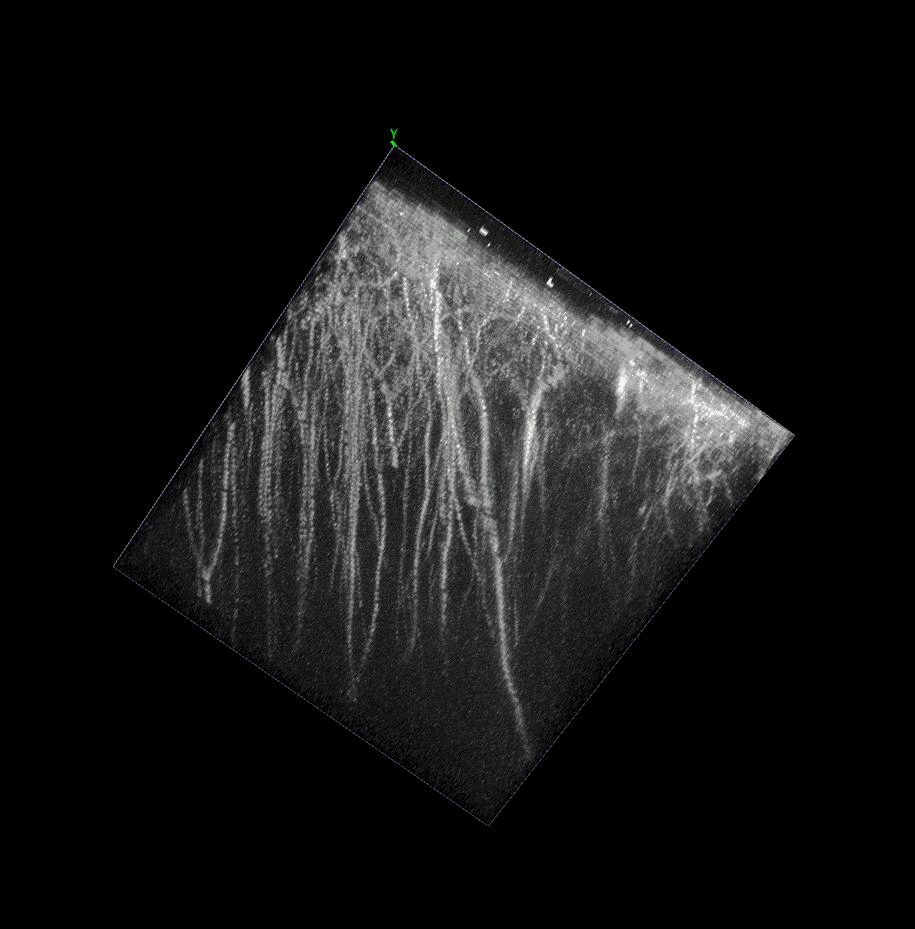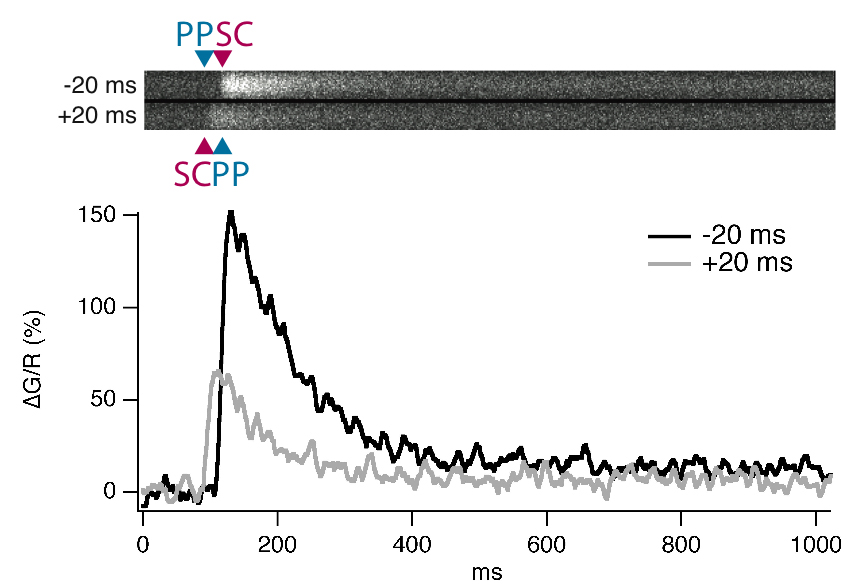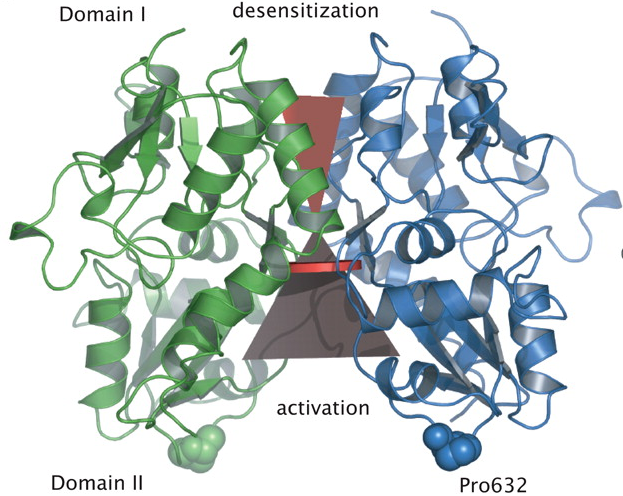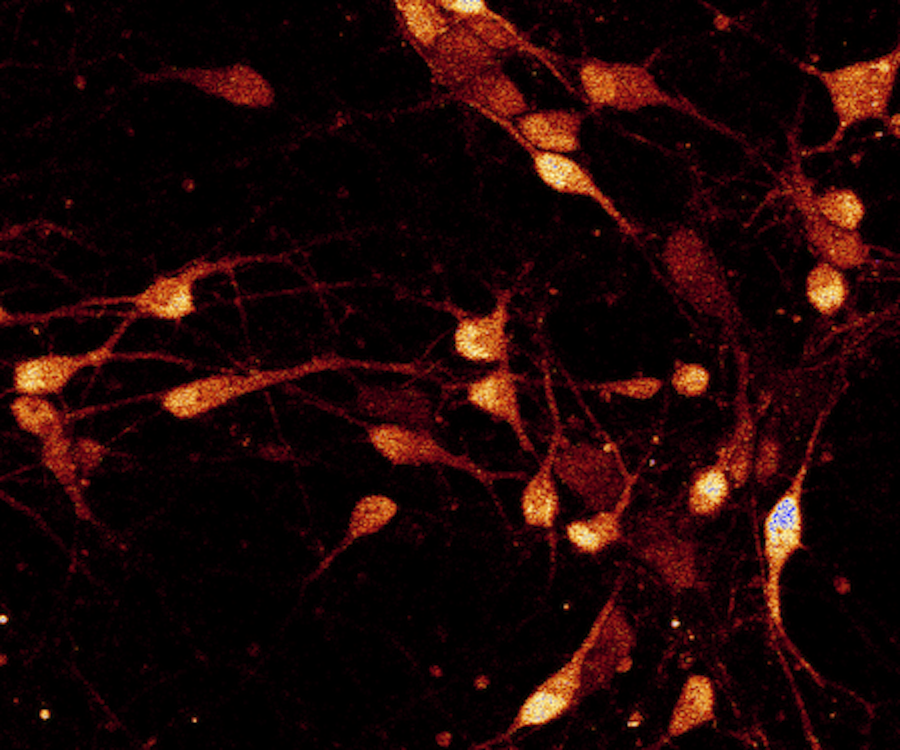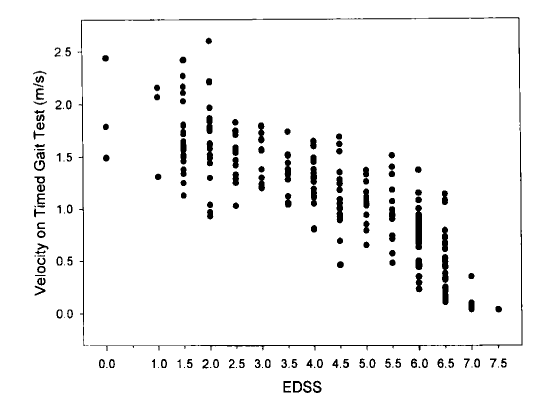 recent publication
recent publication
 The inhibitory microcircuit of the substantia nigra provides feedback gain control of the basal ganglia output
The inhibitory microcircuit of the substantia nigra provides feedback gain control of the basal ganglia output
eLIFE 3:e02397
Dysfunction of the basal ganglia produces severe deficits in the timing, initiation, and vigor of movement. These diverse impairments suggest a control system gone awry.
In engineered systems feedback is critical for stable control.
Here we show that one feedback pathway, axon collaterals of substantia nigra projection neurons, control the gain of the basal ganglia output.
The importance of feedback for engineered control systems implies that the intranigral microcircuit could be essential to normal basal ganglia function.
PDF | HTML
An increase in place field size toward the ventral pole has been taken to suggest that the ventral hippocampus does not convey precise spatial information.
However, a change in spatial scaling could instead signal a shift in the nature of the representation with a preserved precision of decoded position.
We found that, despite a shift from fine to broad spatial tuning of individual cells, spatial representation at the population level was comparably faithful in both regions.
HTML
Midbrain dopamine (DA) neurons receive diverse inputs from regions distributed throughout the neuraxis from frontal neocortex to the mesencephalon.
Here we use local field potentials recorded from the midbrain to show that the evoked potential (mEP) faithfully reflects the temporal and spatial structure of the phasic response of midbrain neuron populations during classical conditioning.
To make optimal decisions in the presence of uncertainty requires the inference of probabilistic models.
For example, financial decision theory posits that selection of optimal portfolios requires information about both the mean and variance of expected returns.
Here we show that mice can accumulate reward timing information over many tens of trials to infer accurate probabilistic models and make optimal decisions.
PDF | HTML
The independent development of head-fixed behavior in rodents by multiple labs has led to diverse designs and solutions.
We found that these solutions often used expensive materials and impeded future development and modification in the absence of engineering support.
In order to address these issues, here we report on the development of a flexible single design using 3D printed plastic components.
PDF | Details
The basal ganglia are part of the forebrain circuitry involved in transforming activity in the cerebral cortex into directed behavior, involving motor learning, habit formation and the selection of actions based on desirable outcomes.
Here we review the anatomical literature describing afferent input, efferent output, and intrinsic connectivity of the basal ganglia.
In the 4th edition of The Rat Nervous System, edited by George Paxinos.
In the 4th edition of The Rat Nervous System, edited by George Paxinos.
Midbrain dopaminergic (DA) neurons are thought to guide learning via phasic elevations of firing in response to reward predicting stimuli.
We found that inhibitory neurons in the ventral midbrain of mice responded to salient auditory stimuli with a burst of activity that occurred before the onset of the phasic response of DA neurons.
Our results elaborate on the dynamic upstream circuits that shape the phasic activity of DA neurons and suggest that the inhibitory microcircuit of the midbrain is critical for new learning in extinction.
PDF
Here we have characterized the retrograde labeling obtained from a series of tracer injections throughout the dorsal striatum of adult mice.
We found systematic variations in input along both the medial-lateral and anterior-posterior neuraxes in close agreement with canonical features of basal ganglia anatomy.
However, the correlation structure of the corticostriatal projection indicated local heterogeneity.
We conclude that individual striatal sites integrate cortical and thalamic input from multiple functional areas.
PDF | Details
Although it is well established that individual ion channel proteins make stochastic transitions between conducting and non-conducting states, most models of synaptic integration are deterministic, and relatively little is known about the consequences of stochastically gating ion channels.
Here, we show that only a stochastic model can fully account for perithreshold membrane potential fluctuations and clustered patterns of spike output that are recorded from stellate neurons.
PDF | Details
HCN1 channels act as an inhibitory constraint of spatial learning, synaptic integration, and LTP in the distal dendrites of hippocampal CA1 pyramidal neurons.
Here we report that HCN1 channels also constrain CA1 distal dendritic Ca2+ spikes, which have been implicated in the induction of LTP at distal excitatory synapses.
Our experimental and computational results indicate that HCN1 channels provide both an active shunt conductance that decreases the temporal integration of distal EPSPs and a tonic depolarizing current that increases resting inactivation of Ca2+ channels.
PDF
Synaptic potentials originating at distal dendritic locations are severely attenuated and, thus, are poor at driving somatic spikes.
Here we report a new plasticity rule in which stimulation of distal perforant path inputs to hippocampal CA1 pyramidal neurons induces long-term potentiation at proximal synapses when the two inputs are paired at a precise interval.
Our results suggest that information arriving at distal CA1 synapses provide instructive signals that act to assess the saliency of mnemonic information propagated through the hippocampal circuit to proximal synapses.
PDF
The HCN1 gene encodes ion channels that control synaptic integration and influence several forms of learning and memory.
We found that during sustained activation of stellate cells sufficient for firing of repeated action potentials, HCN1 channels control the pattern of spike output by promoting recovery of the spike ahp in layer II stellate cells of the entorhinal cortex.
These data suggest that HCN1 channels expressed in layer II stellate neurons of the entorhinal cortex are key molecular components in the processing of inputs to the hippocampus, with distinct integrative roles during resting and active states.
PDF
Small molecules that potentiate AMPA receptor currents relieve cognitive deficits caused by neurodegenerative diseases.
Here we present cocrystal structures of the glutamate receptor GluR2 S1S2 ligand-binding domain in complex with two AMPA receptor potentiators.
Both potentiators bind within the dimer interface at a common site located on the twofold axis of molecular symmetry and adjacent to the "hinge" in the ligand-binding core "clamshell."
We suggest that the potentiators slow deactivation by stabilizing the clamshell in its glutamate-bound conformation.
PDF
Molecular adaptations are believed to contribute to the mechanism of action of antipsychotic drugs (APDs). To establish common gene regulation patterns induced by chronic treatment with APDs gene expression analysis was performed with the Affymetrix U34A array in rats chronically treated with two concentrations of APDs.
We found an increase in the transcription of genes coding for proteins involved in synaptic plasticity and synaptic activity in the FC. We furthermore found that the gene expression profile of APDs is different between FC and striatum.
PDF
We investigated the neural responses associated with the conscious and unconscious (backwardly masked) perception of fearful faces in healthy volunteers who varied in threat sensitivity.
Unconscious processing modulated activity only in the basolateral subregion of the amygdala, while conscious processing modulated activity only in the dorsal amygdala (containing the central nucleus).
These findings provide a biological basis for the unconscious emotional vigilance characteristic of anxiety and a means for investigating the mechanisms and efficacy of treatments for anxiety.
PDF
Long-term synaptic plasticity is a cellular substrate for learning and memory, however, little is known about how learning and memory are regulated by ion channels that regulate synaptic integration.
Deletion of HCN1 channels enhances hippocampal-dependent learning and memory, augments the power of theta oscillations, and enhances long-term potentiation (LTP) at distal but not proximal inputs to CA1 pyramidal neurons.
We suggest that HCN1 channels constrain learning and memory by regulating dendritic integration of distal synaptic inputs to pyramidal cells.
PDF
Dopamine (DA) receptor-mediated signal transduction and gene expression play a central role in many brain disorders from schizophrenia to Parkinson's disease to addiction.
While trying to evaluate the role of L-type Ca2+ channels in dopamine D1 receptor-mediated phosphorylation of the transcription factor cyclic AMP response element-binding protein (CREB), we found that activation of dopamine D1 receptors alters the properties of L-type Ca2+ channel inhibitors and turns them into facilitators of Ca2+ influx.
In contrast to our increasingly detailed understanding of synaptic plasticity, it is less clear how ion channels interact with changes in synaptic strength to influence behavior.
We find that deletion of HCN1 channels causes profound motor learning and memory deficits in swimming and rotarod tasks.
In Purkinje cells, which are a key component of the cerebellar circuit for learning of correctly timed movements, HCN1 mediates an inward current that stabilizes the integrative properties of Purkinje cells and ensures that integration is independent of the previous history of their activity.
PDF
The signal transduction pathway leading from dopamine receptor stimulation at the synapse to gene expression in the nucleus has not been fully elucidated.
Here, we present evidence that D1 receptor stimulation leads to phosphorylation of the transcription factor CREB in the nucleus by means of NMDA receptor-mediated Ca2+ signaling.
The recruitment of the NMDA receptor signal transduction pathway by D1 receptors may provide a general mechanism for gene regulation that is fundamental for mechanisms of drug addiction and long-term memory.
PDF
Enkephalin modulates striatal function, thereby affecting motor performance and addictive behaviors. The proenkephalin gene is also used as a model to study cyclic AMP-mediated gene expression in striatal neurons. The second messenger pathway leading to proenkephalin expression demonstrates how cyclic AMP pathways are synchronized with depolarization. We show that cyclic AMP-mediated regulation of the proenkephalin gene is dependent on the activity of L-type Ca2+ channels.
The objective of this study was to examine the relationships between continuous measures of ambulatory impairment in MS patients and their ordinal counterparts.
The Expanded Disability Severity Scale (EDSS) and the Ambulation Index (AI) are ordinal measures of MS severity based largely on the maximal distance subjects can walk (Dmax) and the time to walk 8 m (T8), respectively.
We found that Dmax and T8 provide more precise information about ambulatory impairment in MS than do the EDSS and AI, allowing better discrimination of differences between patients and potentially greater sensitivity to detect therapeutic effects in clinical trials.
topics
techniques
current lab members
commentary
Google Scholar
ResearchGate
Faculty of 1000
Neuron Minireview
Faculty of 1000
other publications
Welcome to Your Brain (review)
Making the grade with models of persistent activity



